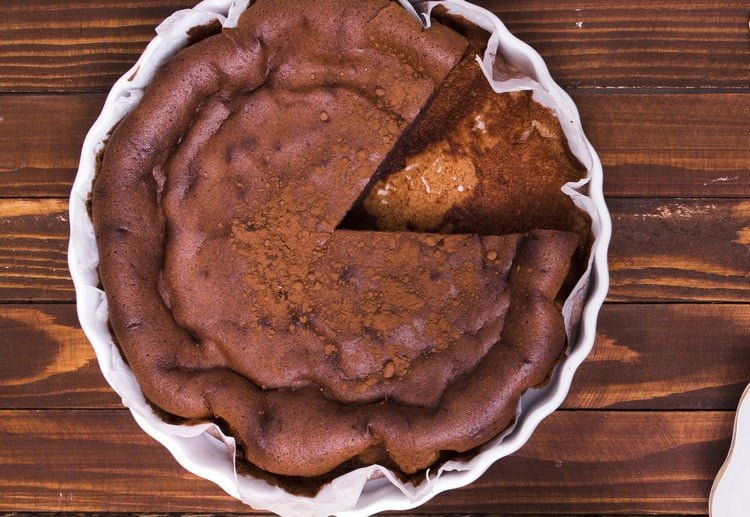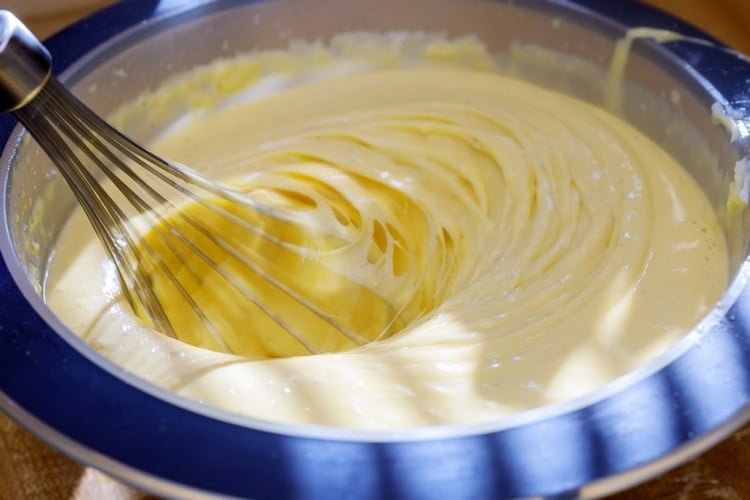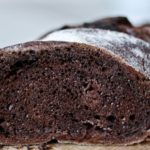You may have heard that excess yeast in the cake spoils the dough, doesn’t it? But why does this happen?
I have separated some tips that can help you a lot, even to identify some preparation errors. Check carefully!
Contenus
5 things that happen when you put too much yeast in the dough

1. Cake dough sinks
This is one of the “symptoms” that we find most and the cause is simple, too much yeast. When we add more yeast than is requested in the recipe, the cake may even grow a lot inside the oven, but when we remove the dough it sinks in the middle.
This is because the growth force created by the yeast is greater than the dough can support, that is, there is not enough structure.
2. Cake is crooked and deformed
Excess yeast in conjunction with a low-power oven results in this. My oven, for example, heats only on one side. So, I have to keep turning the pan to brown on both sides.
If I put more yeast in the dough, I would have a crooked cake, with one side higher than the other. I’ve also seen a cake with a surface full of waves. This is because of the wrong amount of yeast.
3. Bubbles in the middle of the dough
This often happens when we don’t mix the dough properly. If you add too much yeast and the dough is not homogeneous, as it should be, the yeast will develop only in some parts of the cake.
Bubbles may even appear on the surface. There is lost mass, because there is no way to fix it. But if cut the cake in half, stuffing and putting a cover over it can even disguise the defects. 😉
4. Did the dough overflow?
These days I saw a very funny video on YouTube. The cake just exploded inside the oven. Whoever made it, put a lot of yeast in it and when in contact with the high temperature, the dough expanded quickly and overflowed out of the form.
If you happen to add more yeast, already put the dough in a larger form, otherwise the cake pours in the oven. There will be a nuisance for you.
5. Cracks on the cake surface
This always happens, especially if you grease the sides of the form. Greasing the side will act as a protective barrier for the cake, that is, it will limit its growth.
If the dough is too yeasty, the cake will only grow in the center. Result? It will have a belly and will certainly crack on top.
What is the best cake yeast?

There are two types of yeast that are most used in confectionery: Dr. Oetker and Royal. At first, the two look the same, but they are not.
Dr. Oetker starts fermentation only when he is already in the oven. Royal starts fermentation as soon as it is added to the dough. So if you use Royal, you should always add it last to the recipe.
I always recommend Dr. Oetker for cakes that are made entirely in a blender. So, you can add everything, even the yeast and mix for a super practical and quick recipe. 😉
In addition to these yeasts, there is also biological yeast. Yes, the one recommended for breads. I already talked here on the blog about how to make a cake with biological yeast.
It works very well, but requires some important care. In fact, you can make your own cake yeast, you know? Just use ingredients that make natural fermentation, such as raisins, for example.
O sodium bicarbonate it is also used for cake growth and development. You can even replace the yeast, but you need to take care to activate the baking soda before you put it in the dough, otherwise you will have a cake with an unpleasant taste and smell.
To activate the bicarbonate, simply mix it with an acidic ingredient such as yogurt, lemon, orange or even vinegar.
What is the ideal amount of yeast in the cake?
The exact amount of yeast to use in a simple recipe is 1 tablespoon. This taking into account 3 cups (tea) of wheat flour and 1 cup (tea) of milk.
« But what if I double the recipe, should I double the yeast too? » The answer is no. The measure of 1 tablespoon is enough for a double recipe with up to 10 eggs. So, nothing to increase the yeast!
EXTRA TIP: be very careful and never use leavened flour. You can even measure the amount of yeast correctly, but if you use the flour that already comes with yeast, it will spoil your dough.
Did you like to learn more about the secrets of yeast? So, what do you think about sharing these tips? Thus, you end up helping other people as well. To the next!


